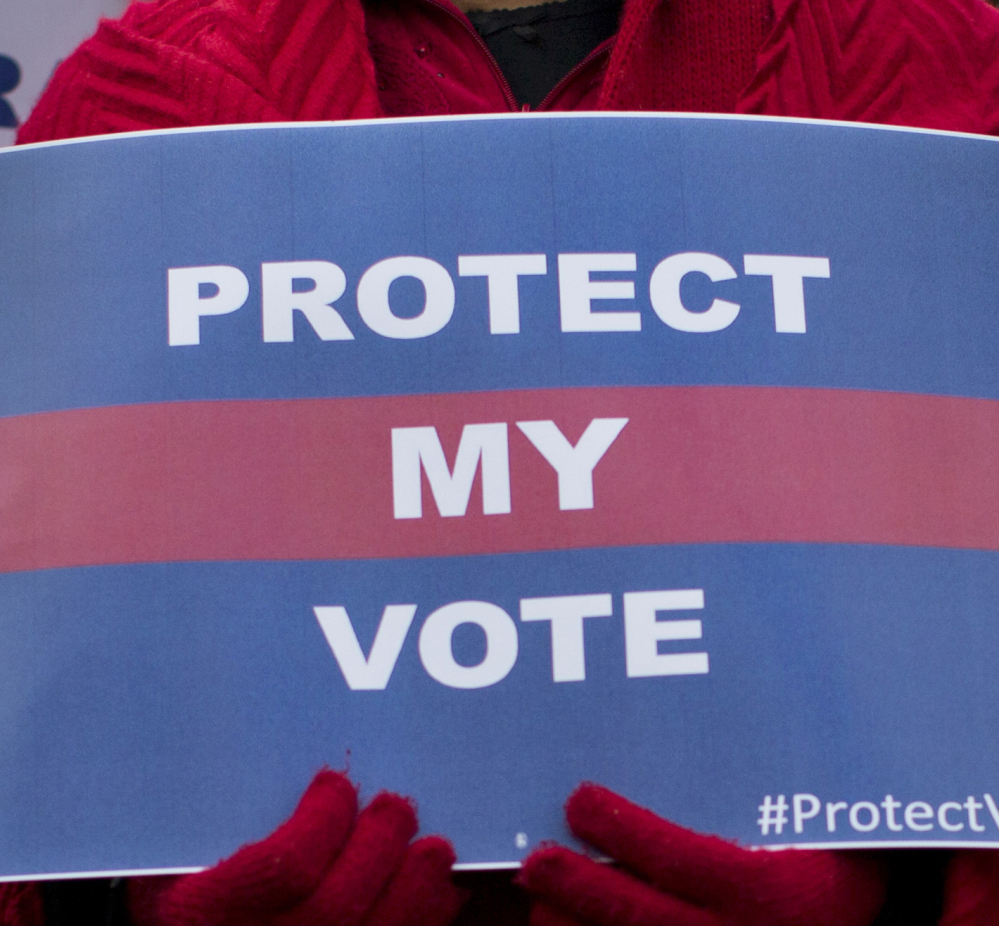WASHINGTON — In last week’s elections, Alabama Republicans shrank their once-powerful Democratic opponents to just eight seats in the state Senate, all of them from districts in which African-Americans are a majority.
Black Democrats say the GOP did it by misusing a landmark voting-rights law, intended to ensure the right to vote for Southern blacks, to instead limit their voting strength. Republicans, they argue, relied too heavily on race to draw new electoral maps following the 2010 census.
The case goes before the Supreme Court on Wednesday. Last year a conservative majority on the court effectively blocked a key component of the Voting Rights Act, and this case will be watched for signs that the rest of the law could be in peril.
Like other Southern states, Alabama has undergone a decades-long change in its electorate. White voters now overwhelmingly back Republicans, leaving black voters as the Democrats’ only reliable voting bloc.
NEW LINES DRAWN
Several states have accelerated that trend by invoking the voting rights law to justify concentrating black voters in certain districts so that the areas around them are proportionally more white and therefore more apt to elect Republicans. The GOP seized control of the Alabama legislature in 2010 and drew new political boundaries based on the 2010 census.
Joe Reed, chairman of the Alabama Democratic Conference, one of the state’s oldest black political organizations, said the result is an unconstitutional gerrymander because the Republicans based their map too heavily on racial composition.
“The proof of the pudding is in the eating,” Reed said. The number of white Democrats in the 35-member state Senate dropped from four to one, though a recount is expected in another district. In the 105-member House, the number of white Democrats fell from 10 to 6.
The current court fight, similar to one in North Carolina, “is a little bit of a role reversal,” said Alabama Solicitor General Andrew L. Brasher, who will defend the state’s legislative districts before the Supreme Court.
“It used to be that this particular kind of claim was a claim that Republicans used to bring to prevent the creation of majority black districts. Now, you have black Democrats bringing it to try to coerce the creation of white Democratic districts,” Brasher said.
SEGREGATION ALLEGED
Alabama moved thousands of black voters into districts that already had a majority of African-Americans. Of the nearly 15,000 people who were placed into the Montgomery district of state Sen. Quinton Ross to bring it up to size based on the census numbers, just 36 were white.
The changes reduced the number of black voters in districts where they did not constitute a majority, but still had helped elect white Democrats.
“It really is segregation at its best,” said Ross.
When the Democrats were in charge, they allowed for greater numerical variation in population from one district to the next, which allowed them more flexibility to draw political boundaries favorable to their candidates.
One hurdle for the Democratic challengers at the Supreme Court is that the Justice Department concluded the new maps were not discriminatory and allowed them to take effect under the part of the voting rights law that used to give Washington the ability to block voting-related changes. That’s the part of the law that the court effectively shut down in a bitterly divided 5-4 ruling in June 2013.
The White House is asking the justices to send the case back to a lower court that upheld the maps for a district-by-district evaluation.
Send questions/comments to the editors.



Success. Please wait for the page to reload. If the page does not reload within 5 seconds, please refresh the page.
Enter your email and password to access comments.
Hi, to comment on stories you must . This profile is in addition to your subscription and website login.
Already have a commenting profile? .
Invalid username/password.
Please check your email to confirm and complete your registration.
Only subscribers are eligible to post comments. Please subscribe or login first for digital access. Here’s why.
Use the form below to reset your password. When you've submitted your account email, we will send an email with a reset code.